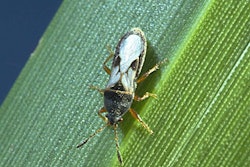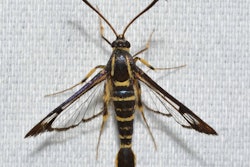Most herbicides, when applied according to the label, rarely cause problems for non-target plants in the landscape. But external factors, such as unanticipated wind or temperatures, can interfere with your intended results, injuring neighboring plants. Often, you’ll know immediately this has happened and can proactively – and quickly – treat the plants to prevent a total loss of the plant. However, it’s those times when you are not aware anything has gone awry with your chemical treatment that you’re left with the daunting task of trying to diagnose the problem, which often mimics typical disease or insect symptoms. If that weren’t challenging enough, it sometimes takes several weeks for damage to appear.
Diagnosis
The degree of difficulty is high. Symptoms of herbicide damage can often vary by plant type.
In one plant, symptoms may be yellowing of leaves while in another one, damage by the very same herbicide may present itself as leaf rolling. And these symptoms can mimic a myriad of traditional plant problems including the presence of insect pests, soil compaction and drought stress. Your best shot at an accurate diagnosis is to rule out these other factors before determining herbicide injury. If herbicides still seem the likely culprit, look for these symptoms and their corresponding chemicals to help you determine with more certainty that accidental herbicide exposure is the problem.
· Browning, yellowing, wilting that appears first in new tissues: glyphosate (Roundup) and glufosinate (Finale)
· Malformed shoots or leaves, stunted growth: pronamide (Kerb) and isoxaben (Gallery)
· Rapid necrosis of the total plant, or desiccation of partial leaves while others seem untouched: diquat
· Leaves look purple before total necrosis: MSMA
· Short, swollen roots corresponding with small lateral root growth: benefin (Balan) and oryzalin
· Stem twisting, deformation: 2,4-D
· Death upon exposure to light: sulfentrazone (Dismiss) and carfentrazone (Quicksilver)
· Growth stops and leaf chlorosis begins. Necrosis develops within a few weeks: sethoxydim (Segment) and clethodim (Envoy)
For a more complete list of injury symptoms, visit the North Carolina State University horticultural Web site at www.ces.ncsu.edu/depts/hort/consumer/quickref/weeds-
herbicides/injury_symptoms.html.
Damage control
Non-target plants exposed to herbicides are not necessarily doomed. There are chances for recovery and some corrective actions you can use to help save them. How quickly (or whether at all) the plant recovers depends on how much herbicide it received, the type of herbicide you used and the overall vigor of the plant before exposure.
Water works: If you suspect non-target plants have been the victims of spray drift, rinse them thoroughly with water to minimize damage. The sooner, the better. If you wait even a few hours, you’ll lose most of the benefit of this corrective measure.
Dusting off: If a non-target plant comes into contact with a traditional non-selective such as glyphosate, you have only a few minutes to try to correct the mistake. If you quickly spread soil or dust on the plant surface, it can work to detoxify the chemical.
Nip it in the bud: For chemicals absorbed into a plant through the foliage, you can prevent uptake by immediately snipping off smaller branches that have been accidentally sprayed.
Food for thought: Fertilizer and water can help save a tree or shrub by invigorating them. So even if you only suspect exposure, apply an appropriate fertilizer accordingly.
Fueling up: For soil-activated herbicide exposure, your best bet is to try to inactivate the chemical by adding activated charcoal to the soil. You should use a pound or two of activated charcoal for every 100 square feet and work it into the soil to a depth of 6 inches.
If you’ve already missed your opportunity to employ these corrective methods, all is not lost. Depending on the plant and amount of exposure, it’s not certain you’ll lose it altogether (in fact, it’s uncommon). However, you’ll at the very least have to work with a withering plant and patiently nurse it back to health.
An ounce of prevention
Application error is to blame for the bulk of herbicide injury to non-target plants. That is just one of the reasons it is critical to read and follow the chemical label. Failure to do so makes you liable for damage to plants and the environment. Always calibrate sprayers before your applications and keep a close eye on weather conditions. Even a small amount of wind can cause spray drift, and high temperatures (above 85 degrees Fahrenheit) can cause some herbicides to vaporize and spread outside the targeted area.









